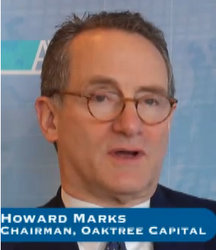Excerpts from a memo sent to his clients by billionaire American investor Howard Marks, whose runs Oaktree Capital Management:
| The old saying goes, “The perfect is the enemy of the good." Likewise, waiting for the bottom can keep investors from making good purchases. The investor's goal should be to make a large number of good buys, not just a few perfect ones. Think about your normal behavior. Before every purchase, do you insist on being sure the thing in question will never be available lower? That is, that you're buying at the bottom? I doubt it. You probably buy because you think you're getting a good asset at an attractive price. Isn't that enough? And I trust you sell because you think the selling price is adequate or more, not because you're convinced the price can never go higher. To insist on buying only at bottoms and selling only at tops would be paralyzing. |
I gave this memo the title Calibrating because of my view that a portfolio's positioning should change over time in response to what's going on in the environment.
As the environment becomes more precarious, (with prices high, risk aversion low and fear lacking), a portfolio's defensiveness should be increased. And as the environment becomes more propitious (with prices low, risk aversion high and fear prevalent), its aggressiveness should be ramped up. Clearly, this process is one of gradual readjustment, not a matter of all-or-nothing. It shouldn't be the goal to do this only at bottoms and tops.
|
If it's cheap ... |
|
|
I don't want to give the impression that it's easy to buy while prices are tumbling.
It isn't, and in 2008, Bruce and I spent a lot of time supporting each other and debating whether we were buying too fast (or too slow). The news was terrible, and for a good while it seemed as if the vicious circle of financial institution meltdowns would continue unchecked.
Terrible news makes it hard to buy and causes many people to say, "I'm not going to try to catch a falling knife." But it's also what pushes prices to absurdly low levels. That's why I so like the headline from Doug Kass that I referred to above: “When the Time Comes to Buy, You Won't Want To."
It's not easy to buy when the news is terrible, prices are collapsing and it's impossible to have an idea where the bottom lies. But doing so should be the investor's greatest aspiration.
| The bottom line for me is that I'm not at all troubled saying (a) markets may well be considerably lower sometime in the coming months and (b) we're buying today when we find good value. I don't find these statements inconsistent. |
April 6, 2020




